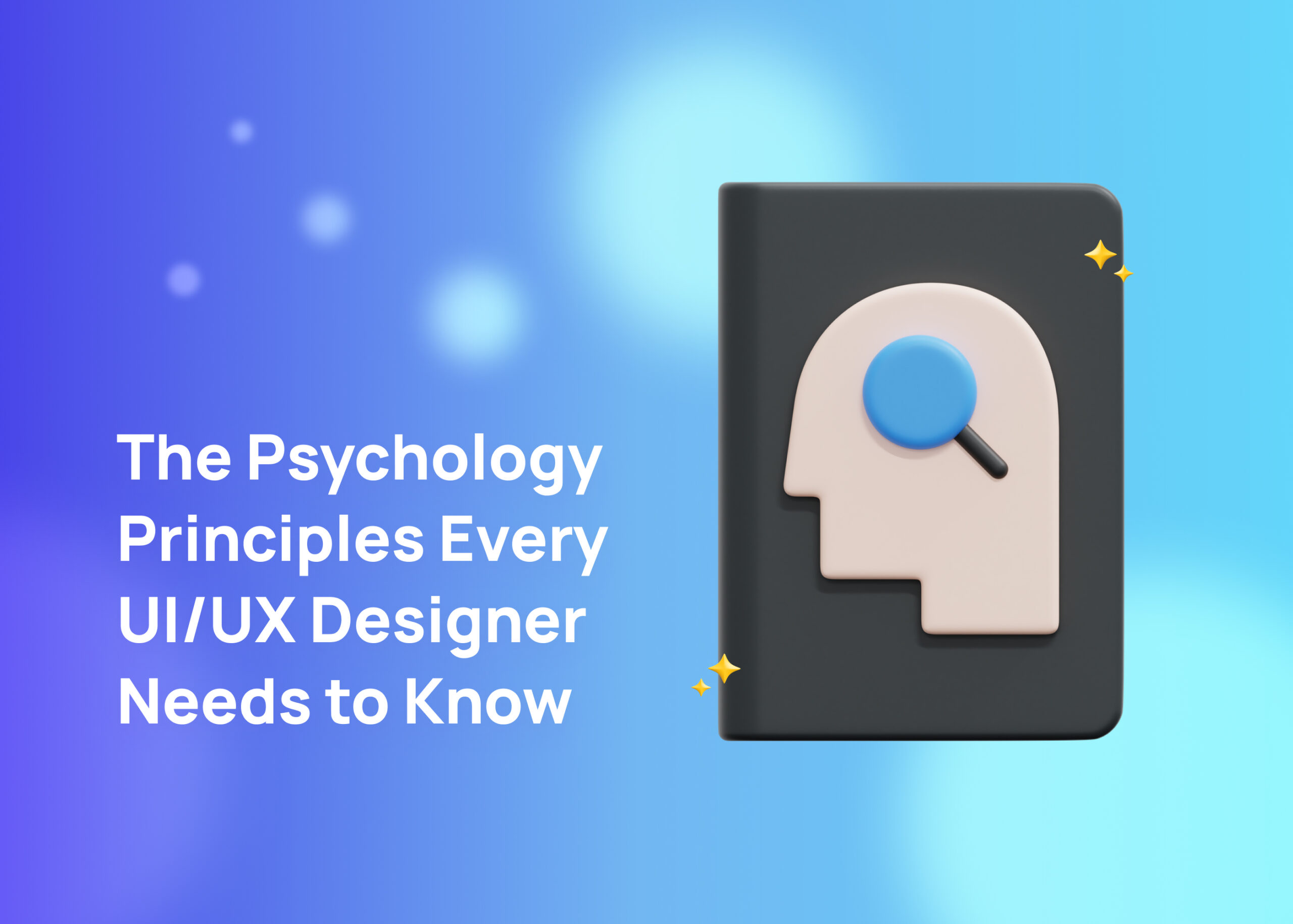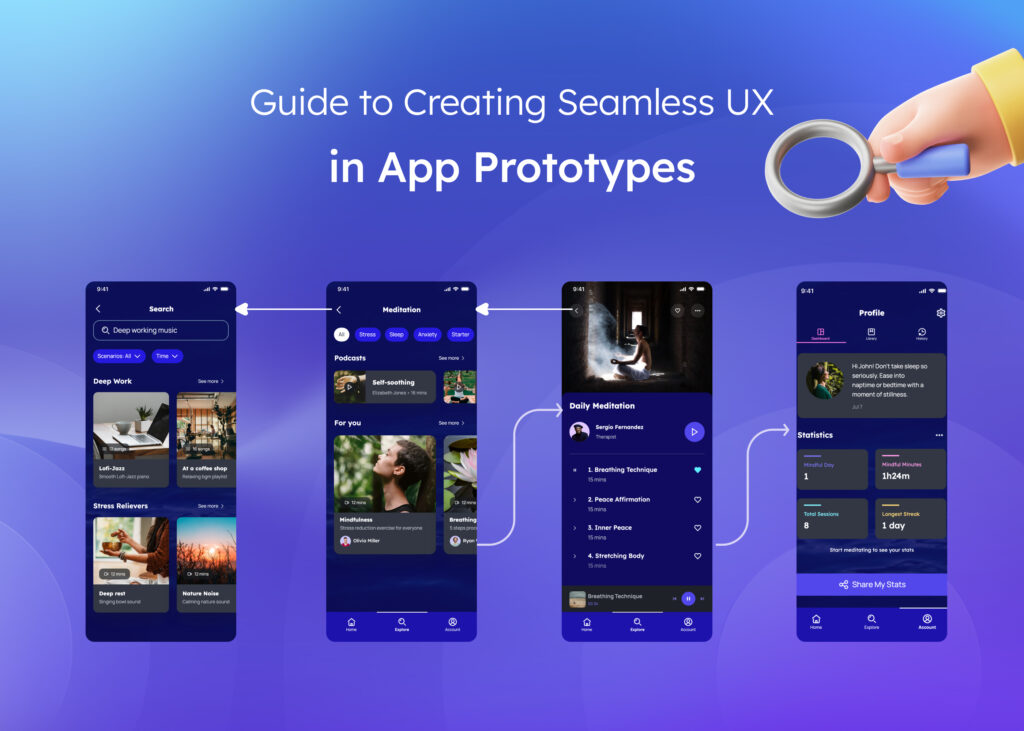
As a UI designer, you are responsible for crafting digital experiences, and your design choices can have a significant impact on how users perceive and interact with your product. Knowing the psychological principles can assist you in creating intuitive, user-friendly interfaces that keep users engaged and motivate them to take desired actions.
This article will delve into the various psychological principles and cognitive biases that can aid you in UI UX design.
The Four Pillars of User Interaction
The process of interacting with a digital product can be broken down into four distinct stages:
- Information Processing
- Significance Attribution
- Action Timing
- Memory Retention
Let’s delve into each of these stages and explore the relevant design principles and cognitive biases that can help you enhance your UI design.
Information Processing: Making Sense of the Interface
During the first interaction stage, users process the information that is presented to them. To make effective design decisions at this stage, several psychological principles can be used.
Understanding Hick’s Law
Hick’s Law suggests that decision-making time increases with the number and complexity of choices. This principle is particularly critical in UI design, where users are often overloaded with information.
Design Recommendations:
- Divide tasks into smaller steps for easier information processing
- Present complex tasks towards the end of the user journey.
- If reducing options isn’t feasible, ensure the content is easy to skim.
The Power of Priming
Priming is a psychological phenomenon that influences decision-making by triggering related information in a user’s memory. This principle can be effectively used in UI design to guide users towards desired actions.
Design Recommendation:
- Use relevant images or videos that highlight the benefits of using your product or service.
Managing Cognitive Load
Cognitive load theory emphasizes that our memory has a limited capacity. Overloading users with unnecessary information can lead to task abandonment.
Design Recommendations:
- Eliminate redundant information.
- Leverage both audio and visual elements to convey information.
- Use familiar visual cues to minimize learning needs.
- Organize information logically and intuitively.
Significance Attribution: Deciphering Meaning
Once users have processed the information, the next step involves making sense of it. Here are some psychological principles that can guide your design decisions at this stage.
Leveraging Social Proof
Social proof is a powerful psychological principle that can greatly influence user behavior. Users tend to accept actions as correct if they observe others performing them.
Design Recommendations:
- Incorporate social proof early on in your design.
- Use video testimonials to enhance the effectiveness of social proof.
Utilizing Curiosity Gap
The curiosity gap is the difference between what users know and what they want to know. This gap can motivate them to seek additional information.
Design Recommendations:
- Use engaging titles that spark curiosity.
- Use reassuring language to make users feel safe while making decisions.
Action Timing: Encouraging User Actions
The third stage of user interaction involves motivating users to take desired actions. Here are some strategies to achieve this.
Implementing Investment Loops
Investment loops are a powerful way to keep users engaged with your product. These loops involve a cycle of trigger, action, reward, and investment, encouraging users to use your product more frequently.
Design Recommendation:
- Reward users for taking desired actions.
Promoting Commitment and Consistency
Users are more likely to take desired actions if they feel committed and consistent with their previous actions.
Design Recommendations:
- Start with small, agreeable actions to build user confidence.
- Break down complex tasks into smaller steps to ease the process.
Memory Retention: Making Lasting Impressions
The final stage of user interaction involves memory retention. Here are some strategies to ensure that users remember their interaction with your product positively.
Providing Exit Points
Always provide exit points at the peak of user experience. Delayed exits can be perceived as unnecessary detours and can negatively impact the overall experience.
Design Recommendations:
- Consider creating a queuing system similar to YouTube or Netflix.
- Include success messages upon task completion.
Utilizing the Peak-End Rule
Users tend to remember the peak and end of their experiences. Hence, ending the experience on a high note can leave a lasting positive impression.
Design Recommendations:
- Celebrate user achievements upon task completion.
- Provide clear starting and ending points.
Applying the Zeigarnik Effect
The Zeigarnik Effect suggests that users remember incomplete tasks more than completed ones. This principle can be leveraged to keep users engaged with your product.
Design Recommendations:
- Encourage users to discover additional content.
- Use progress indicators to motivate users to complete tasks.
Harnessing the Power of Storytelling
Stories can create an empathetic bond with users, triggering strong reactions and deep memories. Meaningful stories can significantly enhance user engagement.
Design Recommendations:
- Use storytelling to convey your viewpoint to stakeholders.
- Create a plot with a conflict to help users visualize how your design can solve their problems.
Incorporating the principles of psychology in UI design can lead to more engaging and user-friendly digital products. And when it comes to prototyping these designs, Visily – the best wireframing and prototyping tool, can be your go-to resource. Its intuitive interface and versatile features make it the perfect tool for bringing your UI designs to life.













